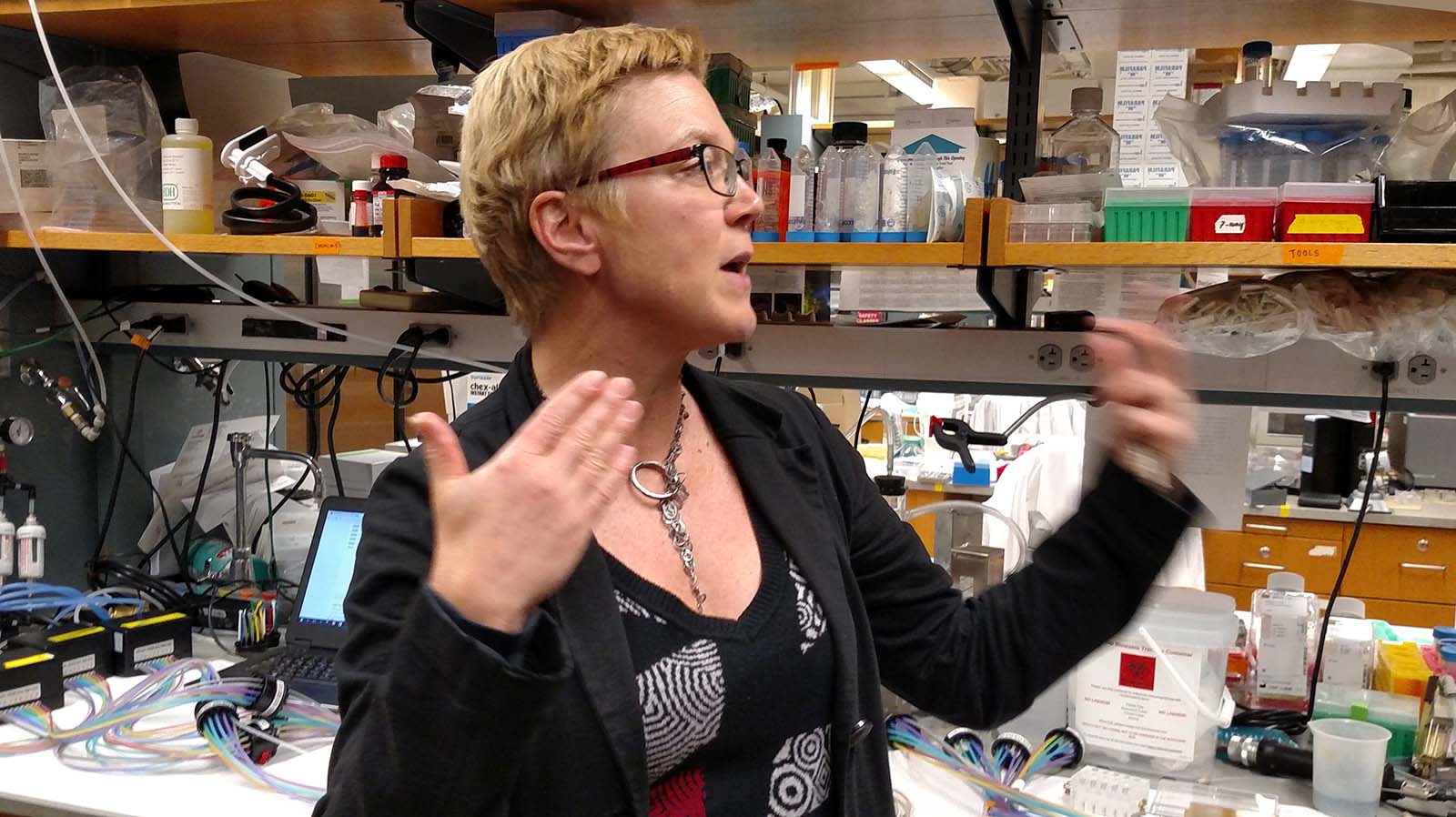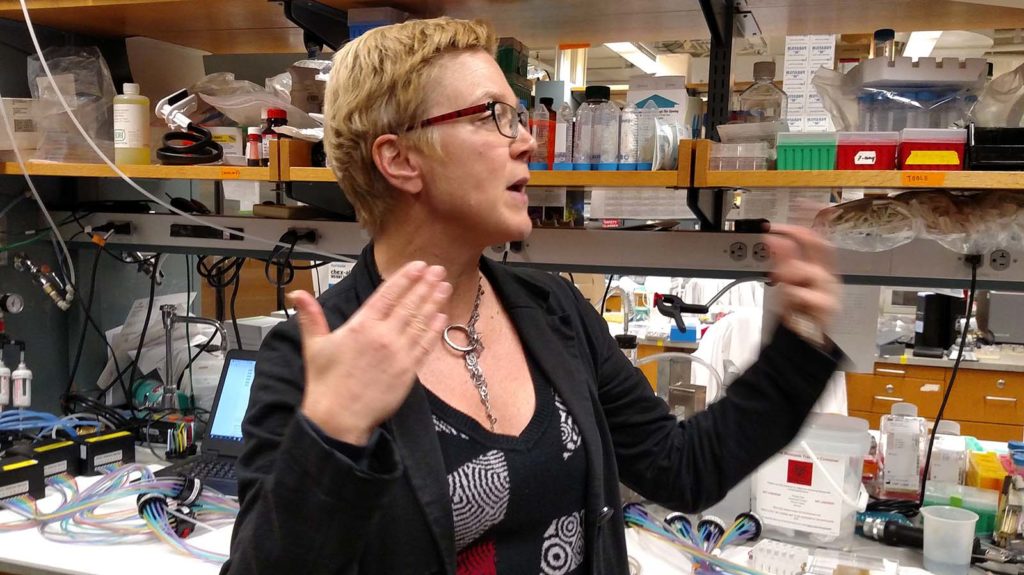
“What should we be building? How do we influence cells?” asked Dr. Linda Griffith. “How do we get at their inner machinery and give them the cues they need to build a tissue?”
Griffith began the March 7 KSJ seminar and lab tour by squeezing the fellows into her office in the bioengineering department, where she gave a rapid overview of her work as the director of the MIT Center for Gynepathology Research and leading research to model human organ systems. Griffith manages interdisciplinary grants with multiple collaborators, teaching, advising students, and leading the Center, and keeps on schedule with a clock that rings six minutes ahead—with the sound of a revving Harley-Davidson bike.
Griffith started at MIT as a postdoc in regenerative medicine, engineering liver tissue and teaching at Harvard Medical School. She played a central role in the creation of the biological engineering department — leading the development of the first new undergraduate major at MIT in almost 40 years — and launched an initiative to study the systems and pathways that cause endometriosis, a disorder in which the uterine lining grows on other internal and reproductive organs, causing pain and often infertility in nearly one in 10 women.
“When we say engineers look at problems in society, I decided that women’s health is a hugely underserved area,” Griffith said, who has never missed a day of work for her nine endometriosis surgeries. Much is still unknown about endometriosis: There is still no method for correlating the size and characteristics of lesions with a patient’s symptoms, molecular profile, or prognosis in response to therapy, a routine step of many cancer diagnoses. “Part of my mission here is to educate by formulating problems in a way that my colleagues think they are tractable and interesting and exciting and useful to work on,” she said. “That’s why I have the center for women’s health.”
A barrier to creating new drugs, especially for women’s diseases, is the lack of efficacy models — either an animal or a lab-grown human tissue that will test how the new drug would work. Pharmaceutical companies “will do it for cancer but not for these diseases that are much more prevalent,” Griffith said. “I wanted to figure out how can we build efficacy models for these complex diseases.”
Griffith is program director and one of several principal investigators working with DARPA funding to create the Human Physiome on a Chip. The chip is a step toward better modeling for drug discovery — and a step away from using animal models. “We don’t want to kill them, but they also don’t represent the biology that we want,” Griffith said.
In the lab, grad student Luis Soenksen showed the fellows a plastic custom-machined chip. Wells in the chip hold several individual model organ tissues, often derived from a single patient’s induced pluripotent stem cells, and are connected via microfluidic channels attached to pumps. The heart cells beat like a heart. The neurons in the brain extend axonal projections to other neurons. The gut epithelium contains a sample gut microbiome, preventing bacteria from contaminating the rest of the system. Bloodlike media circulates between the organs, allowing them to interact as a system. One reason so many drugs fail late in development is unexpected effects on other organs.
At a neighboring bench, grad student Pierre Phabmixay passed around scaled-up 3D-printed models of the geometric scaffolds. He focuses on the brain and the liver, two organs that rely on dense networks of blood vessels. The larger models allow for easy visualization of each unique architecture, but Phabmixay ultimately prints microscopic scaffolds with biocompatible polymers that he seeds with human cells.
After dragging fellows away from Soenksen and Phabmixay, who were still eagerly focusing a microscope and explaining how microfluidic pumps could simulate blood distribution to organs throughout the body, Griffith herded the group back into her office to answer any final questions. She invited interested fellows to attend the lab meeting the next day, off the record.
“She seems like the ultimate interdisciplinary scientist and collaborator, bringing together systems biology, engineering and medicine,” said KSJ fellow Lauren M. Whaley, “as a journalist interested in biotechnology and women’s health, I was thrilled to meet Linda Griffith and visit her lab. I want to spend a lot more time there if she’ll let me!”





Leave a Reply